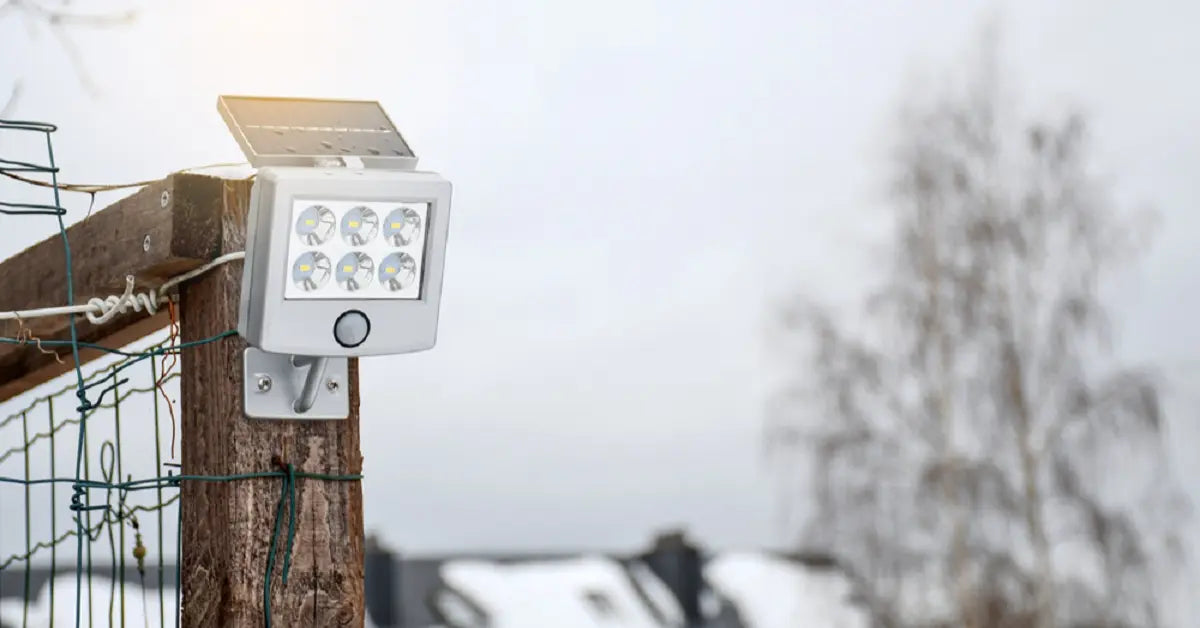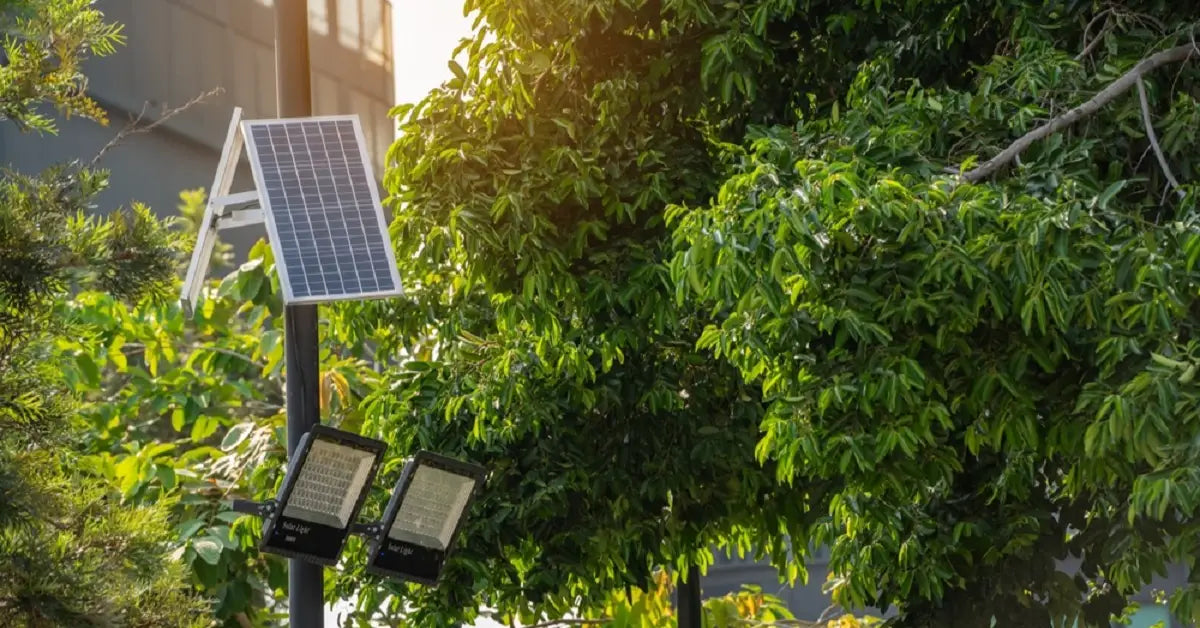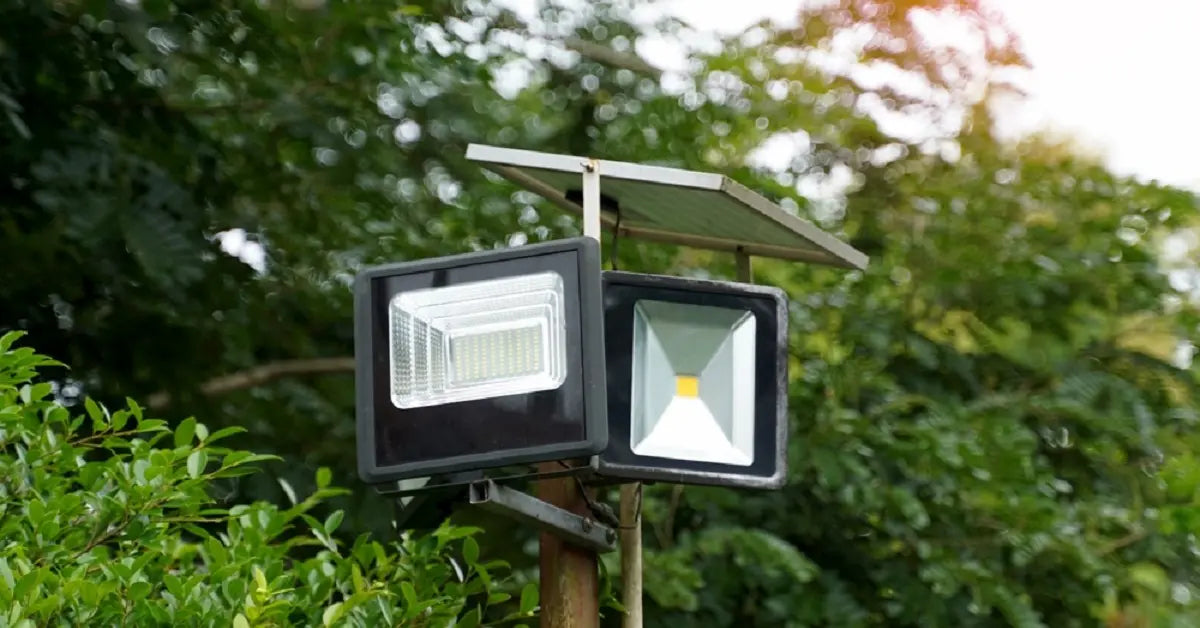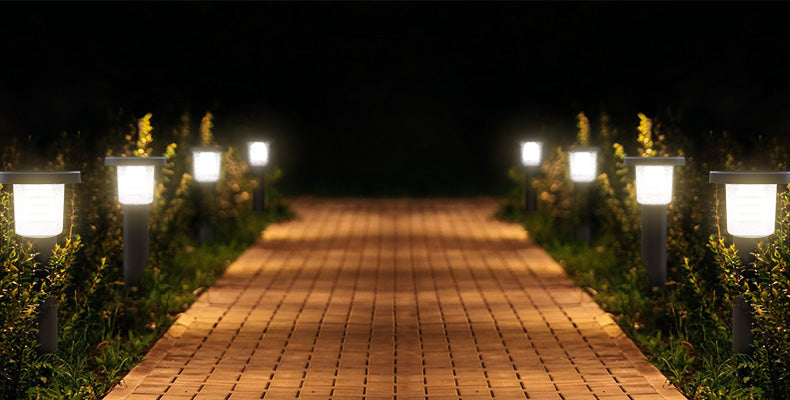Winter's long, dark nights make reliable outdoor lighting essential. I can't tell you how many homeowners have asked me the same worried question: "Will my solar lights actually work when the days get short and cold?"
Here's the truth I tell them. Yes, solar lights absolutely can work in winter. But they need the right features and a little help from you.
I've spent years testing solar lighting in harsh conditions. From snowy Chicago winters to cloudy Pacific Northwest weather, I've seen what separates lights that struggle from those that thrive. This guide will show you exactly what works.
The Short, Honest Answer: Do Solar Lights Work in Winter?

Let me be direct. Yes, solar lights work in winter, but their performance will be reduced.
This isn't a flaw in the technology. It's simple physics. Winter brings shorter days, weaker sunlight, and battery-draining cold.
The good news? You can absolutely maintain bright, reliable lighting throughout winter. It comes down to two things: choosing quality lights with winter-focused engineering, and using a few smart maintenance techniques.
Why Winter is a Challenge for Solar Lights: A Quick Science Lesson

Understanding the challenge helps you solve it. Let me break down what's actually happening during those cold months.
Reduced Sunlight and Shorter Days
Summer gives you 14–16 hours of potential charging time. Winter? That can shrink to just 8–10 hours. That's nearly half the energy collection window.
Your solar panels have far less time to do their job.
Weaker Sunlight Intensity and Lower Angle
Here's something most people don't realize. The sun sits much lower in the winter sky. This means sunlight hits your panels at an oblique angle instead of directly.
Think of it like shining a flashlight straight down versus at an angle. The angled light spreads out, delivering less concentrated energy. Even on clear days, you're getting weaker solar intensity.
Add in cloudy conditions, and panel efficiency can drop to about 50%.
Snow and Ice Accumulation
This one's obvious but critical. Snow or ice covering your solar panel blocks light absorption completely. It's like putting a blanket over your panels.
Many commercial-grade panels are tilted at 45° or similar angles. This helps snow slide off naturally instead of building up.
Cold Temperatures Affect Battery Performance
Here's where it gets interesting. Solar panels actually work more efficiently in cool weather. But extreme cold hammers your battery.
Most standard lithium batteries lose 20–30% of their capacity in freezing temperatures. That means shorter runtime at night, even if the panel charged properly during the day.
How to Make Your Solar Lights Work Better in Winter: A Pro's Checklist

I've developed this checklist through real-world testing. These strategies work.
Maximize Sunlight Exposure
Position is everything in winter. Place your solar lights in the sunniest spots available, especially south-facing locations if you're in the Northern Hemisphere.
Avoid areas shaded by trees, buildings, or roof overhangs. Every minute of direct sunlight matters when days are short.
Tilt the Panels
If your solar panel is adjustable, increase its tilt angle by about 15 degrees more than your latitude. This positions the panel more perpendicular to the sun's lower winter path.
It's a small adjustment that can significantly boost energy collection.
Keep Panels Clean
This is the most overlooked maintenance step. I recommend checking your panels at least once a week during winter.
Use a soft brush or cloth to gently remove snow, ice, dirt, or debris. Warm water works well for stubborn ice, but avoid scratching the surface. A clean panel can mean the difference between dim light and full brightness.
Adjust Settings
If your lights have adjustable brightness or motion sensor modes, use them strategically. Switch to a lower brightness setting to conserve energy.
Motion-activated lights are perfect for winter. They only illuminate when needed, dramatically extending battery life during those energy-scarce months.
Consider High-Quality Lights
Not all solar lights are created equal. Look for systems with high-efficiency photovoltaic cells, anti-reflective coatings, and high-capacity batteries rated for cold weather.
Advanced lithium-ion or LiFePO4 batteries handle cold much better than standard batteries. This upgrade alone can transform winter performance.
Store Decorative Lights
For smaller, inexpensive decorative lights, consider bringing them inside during the harshest winter months. This extends their lifespan significantly.
Just make sure they're fully charged and cleaned before storage.
Choosing a Light Engineered for Winter: From Surviving to Thriving

Here's where engineering makes all the difference. Quality design directly addresses every maintenance challenge I just described.
Let me show you what winter-ready engineering actually looks like.
The Power of a Massive "Energy Reserve": Why a 20,000mAh Battery Matters
In winter, limited sun hours are your biggest challenge. High-quality manufacturers solve this by designing systems with enough battery capacity to provide days or even weeks of autonomy.
Autonomy means runtime without charging. It's calculated based on the winter solstice—the darkest day of the year.
A massive 20,000mAh battery provides a superior energy reserve. This capacity stores enough power to guarantee reliable illumination even after multiple continuous cloudy days or snow cover. Smaller batteries simply can't handle this.
Think of it as having a backup generator versus a small emergency battery pack.
Chasing the Sun: The Advantage of a Separated Solar Panel
Remember when I said maximizing sunlight exposure is critical? Here's where smart design makes that easy.
solar flood light engineered for winter performance features a separated solar panel with a long connection cable—often 16.4 feet or more. This is a game-changer.
You can mount the light fixture under an eave or porch where you need illumination. Meanwhile, the solar panel sits on your roof or wall in full, unobstructed sunlight.
No compromises. You get light exactly where you need it and solar charging in the optimal location.
Smart Power Management with Remote Control
The ability to adjust settings becomes crucial when working with limited winter sunlight. Quality lights include remote controls with multiple power-saving modes.
This lets you strategically manage your battery's output. Switch between full brightness for security and extended low-power modes for ambient lighting. You ensure the light lasts through the entire night, even if the battery didn't fully charge during the day.
Look for lights with robust IP65 ratings too. This ensures proper waterproofing and weather resistance to handle rain, snow, frost, and freezing temperatures without degrading.
The engineering philosophy behind winter-ready lights is simple. Anticipate the challenge and build solutions directly into the product. It's the difference between fighting winter conditions and confidently working with them.
Explore Year-Round Outdoor Lighting Solutions
The principles we've discussed—high-capacity batteries, durable IP65+ weatherproofing, and efficient panels—apply across all quality solar products.
Whether you need security lighting, pathway illumination, or decorative fixtures, investing in performance-focused engineering pays off. You're buying technology built to last years through every season and condition.
That's peace of mind you can count on. Discover a range of reliable solar outdoor lights designed with this same year-round reliability philosophy.
FAQs
How can I get my solar lights to work in winter?
Start by maximizing sunlight exposure. Place lights in south-facing areas and adjust panel angles if possible.
Keep panels clean by gently removing snow and debris weekly. Adjust settings to lower brightness or motion detection modes to conserve charge. Most importantly, use high-quality lights with cold-weather-rated batteries.
How cold is too cold for solar lights?
Most modern, high-quality solar lights withstand freezing temperatures without issues. Cold actually increases panel efficiency.
However, extreme cold primarily affects the battery. Temperatures below 32°F (0°C) can reduce battery capacity by 20–30%. For consistently severe cold, look for lights using Lithium Iron Phosphate (LiFePO4) technology, which handles cold much better.
How to charge solar lights in winter?
Maximize the limited sunlight hours you have. Keep the solar panel surface completely clean of snow, ice, and dirt.
Ensure proper positioning and angling for the low winter sun. Some hybrid solar lights include USB connectors that allow traditional charging during extended overcast periods as a backup option.
Is it okay to leave solar lights out in the winter?
Yes, it's generally fine to leave high-quality solar lights outdoors year-round. Durable fixtures with IP65 or higher ratings resist water, snow, ice, and wind effectively.
Commercial-grade solar lights are specifically sized for worst-case scenarios like the December solstice. However, small, inexpensive decorative lights may benefit from indoor storage during the harshest conditions to extend their lifespan.
Further Reading
How Do Solar Lights Work? The Ultimate Simple Step-by-Step Guide
Why Do Solar Lights Fog Up? The Complete Homeowner's Guide 2025
How to Charge Solar Lights Without Sun: 7 Methods + Ultimate Solution



